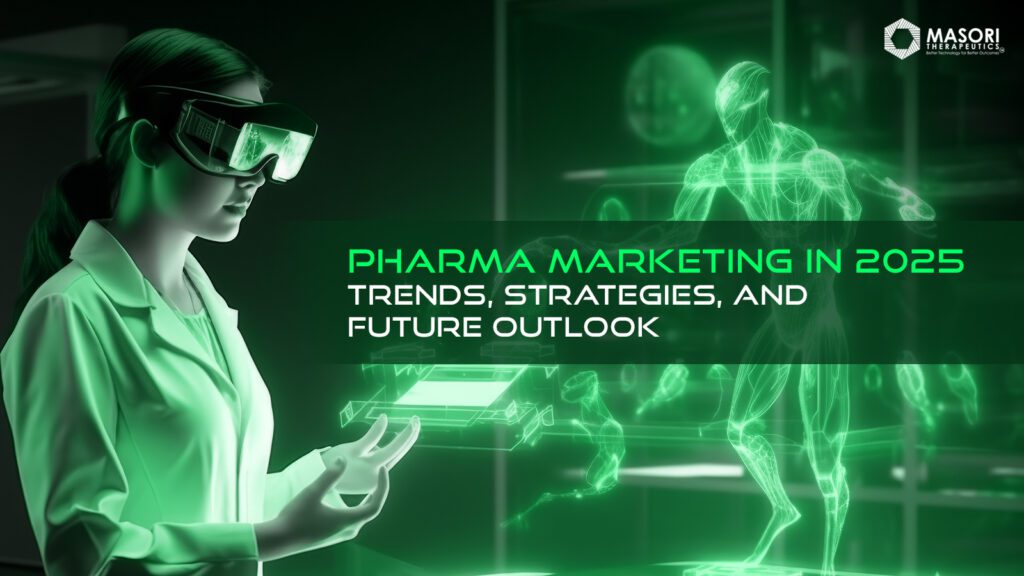
Pharmaceutical marketing in the United States is undergoing a transformative shift in 2025. Driven by technological advancements, evolving consumer behaviors, and regulatory changes, the industry is embracing innovative strategies to connect with healthcare professionals (HCPs) and patients. This blog explores the latest trends, effective strategies, and addresses common questions surrounding pharma marketing in today’s dynamic landscape.
Artificial Intelligence (AI) and data analytics are revolutionizing pharma marketing by enabling highly personalized patient engagement. Over 85% of pharmaceutical companies are becoming data-driven, allowing for a deeper understanding of patient behaviors and preferences. This approach results in more relevant messaging and improved outcomes, such as higher prescription adherence.
The rise of digital platforms has led pharma companies to adopt omnichannel strategies, integrating various touchpoints such as social media, email, and virtual events. This holistic approach ensures consistent messaging and enhances the overall customer experience.
Healthcare data analytics is becoming increasingly central to pharma marketing strategies, with both clinical and commercial teams recognizing that the entire commercial lifecycle of their products must be informed by real-world data (RWD). This data is crucial for understanding the total addressable market, especially when millions are spent on drug research and development.
The U.S. Food and Drug Administration (FDA) has implemented new rules for TV and radio drug advertisements, requiring clearer and more direct communication of risks and side effects without distracting visuals or audio effects. These guidelines, effective from November 20, aim to eliminate practices that downplay safety information.
Recognizing the power of social media, pharma companies are collaborating with health influencers to disseminate accurate information and combat misinformation. Agencies like Ogilvy have established specialized units to connect brands with verified health influencers, ensuring credibility and compliance.
Q1: What is the significance of AI in pharma marketing?
AI enables the analysis of vast datasets to uncover insights into patient behaviors and preferences, allowing for personalized marketing strategies that improve engagement and outcomes.
Q2: How are regulatory changes impacting pharma advertising?
Recent FDA guidelines mandate clearer communication of drug risks in advertisements, emphasizing the need for transparency and accuracy in marketing materials.
Q3: Why is real-world evidence important in marketing strategies?
Real-world evidence provides insights into how drugs perform in everyday settings, allowing marketers to tailor messages that reflect actual patient experiences and outcomes.
Q4: How can pharma companies effectively use social media?
By collaborating with verified health influencers and creating informative content, pharma companies can engage audiences on social media while ensuring compliance and credibility.
Q5: What role does personalization play in patient engagement?
Personalized marketing addresses individual patient needs and preferences, leading to increased trust, satisfaction, and adherence to treatment plans.

Pharmaceutical marketing in the United States is undergoing a transformative shift in 2025. Driven by technological advancements, evolving consumer behaviors, and regulatory changes, the industry is embracing innovative strategies to connect with healthcare professionals (HCPs) and patients. This blog explores the latest trends, effective strategies, and addresses common questions surrounding pharma marketing in today’s dynamic landscape.
Artificial Intelligence (AI) and data analytics are revolutionizing pharma marketing by enabling highly personalized patient engagement. Over 85% of pharmaceutical companies are becoming data-driven, allowing for a deeper understanding of patient behaviors and preferences. This approach results in more relevant messaging and improved outcomes, such as higher prescription adherence.
The rise of digital platforms has led pharma companies to adopt omnichannel strategies, integrating various touchpoints such as social media, email, and virtual events. This holistic approach ensures consistent messaging and enhances the overall customer experience.
Healthcare data analytics is becoming increasingly central to pharma marketing strategies, with both clinical and commercial teams recognizing that the entire commercial lifecycle of their products must be informed by real-world data (RWD). This data is crucial for understanding the total addressable market, especially when millions are spent on drug research and development.
The U.S. Food and Drug Administration (FDA) has implemented new rules for TV and radio drug advertisements, requiring clearer and more direct communication of risks and side effects without distracting visuals or audio effects. These guidelines, effective from November 20, aim to eliminate practices that downplay safety information.
Recognizing the power of social media, pharma companies are collaborating with health influencers to disseminate accurate information and combat misinformation. Agencies like Ogilvy have established specialized units to connect brands with verified health influencers, ensuring credibility and compliance.
Q1: What is the significance of AI in pharma marketing?
AI enables the analysis of vast datasets to uncover insights into patient behaviors and preferences, allowing for personalized marketing strategies that improve engagement and outcomes.
Q2: How are regulatory changes impacting pharma advertising?
Recent FDA guidelines mandate clearer communication of drug risks in advertisements, emphasizing the need for transparency and accuracy in marketing materials.
Q3: Why is real-world evidence important in marketing strategies?
Real-world evidence provides insights into how drugs perform in everyday settings, allowing marketers to tailor messages that reflect actual patient experiences and outcomes.
Q4: How can pharma companies effectively use social media?
By collaborating with verified health influencers and creating informative content, pharma companies can engage audiences on social media while ensuring compliance and credibility.
Q5: What role does personalization play in patient engagement?
Personalized marketing addresses individual patient needs and preferences, leading to increased trust, satisfaction, and adherence to treatment plans.